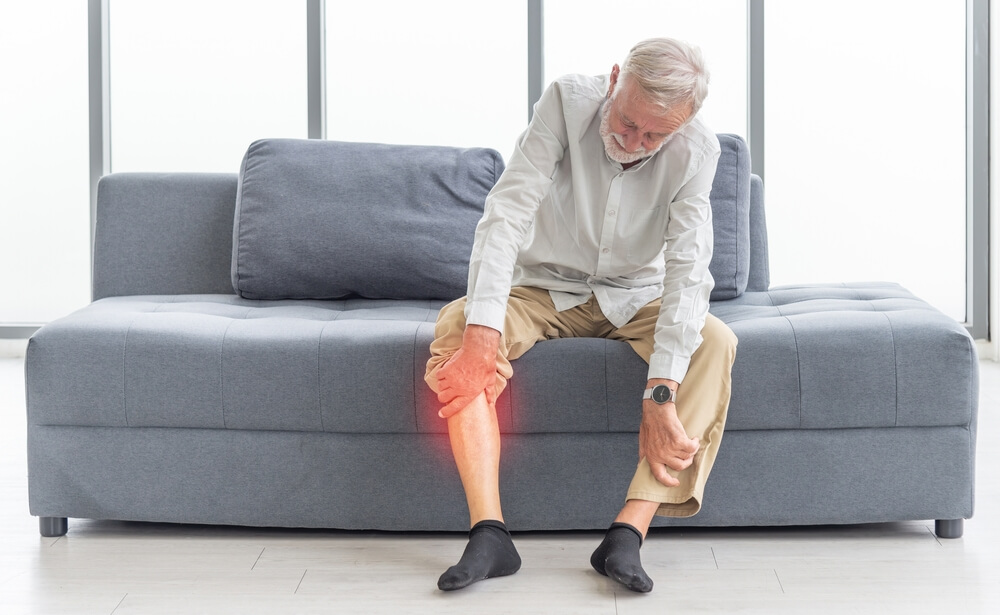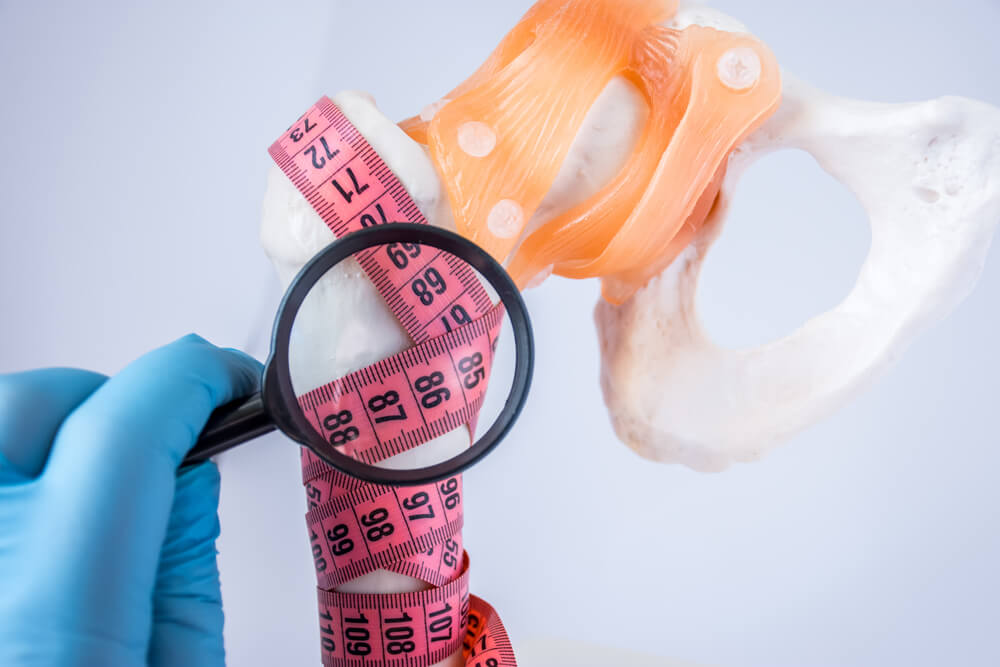Bone density is an essential aspect of overall health and well-being. It measures the amount of mineral matter, such as calcium and phosphorus, present in a given area of bone tissue. Low bone density, also known as osteopenia or osteoporosis, is a condition in which the bones become weak and brittle, increasing the risk of fractures and other injuries. While many people believe that once bone density is lost, it cannot be regained, recent research suggests that it may be possible to rebuild bone density and achieve osteoporosis reversal through a combination of lifestyle changes, such as exercise and diet, and medical interventions, such as medication.
In this article, experts at Fern F. Taisenchoy-Bent, MD LLC will explore the best way to reverse osteoporosis and various methods for rebuilding and reversing bone loss to improve your overall bone health.
How Does Age Affect Bones?
Bones are living tissues that are constantly being remodeled throughout our lifetime. In childhood and adolescence, bones grow and become denser, reaching peak bone mass around the age of 30. After this point, the balance between bone formation and bone resorption begins to shift, and bones start to lose density and strength. This process is called bone loss, and it happens to everyone. The bone loss rate is affected by various factors, including genetics, sex, hormone levels, and lifestyle choices.
As we age, the rate of bone loss increases, which means that older adults are at a higher risk of developing conditions like osteoporosis and osteopenia. The risk is exceptionally high for postmenopausal women, who experience a rapid decline in estrogen levels that can lead to accelerated bone loss. Men also experience bone loss as they age, but it tends to occur at a slower rate than in women. Other factors, such as a lack of physical activity, poor nutrition, smoking, and excessive alcohol consumption, can also cause age-related bone loss.
It’s important to note that while age-related bone loss is a natural process, it can be slowed or even reversed through lifestyle changes and medical interventions. Eating a diet that is rich in calcium and vitamin D, engaging in regular weight-bearing exercise, and avoiding tobacco and excessive alcohol consumption can help to maintain and improve bone health as we age.
The Difference Between Osteoporosis and Osteopenia

Osteoporosis and osteopenia are both conditions that affect bone density.
Osteoporosis is a more severe condition characterized by a significant loss of bone mass and an increased risk of fractures. People with osteoporosis have weak and brittle bones, making them more susceptible to fractures, even from minor falls or injuries.
On the other hand, osteopenia is a less severe condition characterized by a lower than normal bone density. People with osteopenia have a higher risk of developing osteoporosis later in life, but their bones are not as fragile as in the case of osteoporosis. It is considered a “pre-osteoporosis” stage, in which the bones are not yet as weak as those of someone with osteoporosis, but they are more fragile than those of a healthy person with normal bone density.
Both conditions are more common in older adults, especially postmenopausal women, but can occur at any age due to certain lifestyle factors or underlying medical conditions.
Conditions That Negatively Affect Bone Density
Several health conditions can negatively affect bone density, making an individual more susceptible to osteoporosis.
One of the most common causes of osteoporosis is aging, as bone density naturally declines as we get older. This is particularly true for postmenopausal women, who lose bone density faster due to the decline in estrogen levels.
Chronic diseases such as rheumatoid arthritis, inflammatory bowel disease, and lupus can also negatively affect bone density. These conditions can lead to chronic inflammation in the body, which can increase the rate of bone loss.
Endocrine disorders, such as hyperthyroidism and hyperparathyroidism, can also cause bone loss by disrupting the balance of hormones that regulate bone metabolism.
Cancer and its treatments, such as chemotherapy and radiation therapy, can lead to bone loss by affecting cells responsible for bone formation and remodeling.
Certain medications, such as glucocorticoids (commonly used to treat inflammation and autoimmune disorders), anticonvulsants, and some antidepressants, can also facilitate bone loss.
Smoking and excessive alcohol consumption can negatively affect bone density. Nicotine in cigarettes can decrease blood flow to the bones, making it harder for them to absorb the nutrients they need. At the same time, alcohol can interfere with the body’s ability to absorb vitamin D and calcium. Being sedentary and not getting enough physical activity can also lead to decreased bone density.
It’s important to note that these conditions may also lead to other health problems, and it’s essential to address them adequately.
Can Osteoporosis Be Reversed?
While osteoporosis is a chronic condition that cannot be fully cured, it can still be treated and managed to prevent bone loss and fractures. Recent research suggests that reversing osteoporosis may be possible, especially in the early stages of the disease.
One of the most effective ways to rebuild bone density is through weight-bearing exercises, such as weightlifting or brisk walking. These activities stimulate the cells that build bone (osteoblasts) and can help to increase bone density over time. Additionally, a diet rich in calcium and vitamin D can help support bone health and slow the rate of bone loss, even reversing bone loss gradually.
Medications such as bisphosphonates, denosumab, and teriparatide can also be used to rebuild bone density by slowing the rate of bone resorption and increasing the rate of bone formation. These medications can be effective in rebuilding bone density, but they need to be taken over a prolonged period of time, and they may have side effects.
It’s important to note that while it may be possible to rebuild some of the bone density lost due to osteoporosis, treatment aims to prevent further bone loss and reduce the risk of fractures. It may not be possible to get osteoporosis reversal completely, but early diagnosis and treatment can help to slow the progression of the disease and improve overall bone health.
Can Osteoporosis Be Reversed With Diet?
Reversing osteoporosis with diet is possible, as certain foods and nutrients can help to strengthen bones and slow down bone loss.
Calcium and vitamin D are two essential nutrients for bone health, and they can be found in various foods. Dairy products, such as milk, cheese, and yogurt, are rich sources of calcium, while fatty fish, such as salmon and tuna, are good sources of vitamin D. Leafy green vegetables, such as kale and broccoli, also contain a good amount of calcium. For vegetarians and vegans, fortified plant-based milk and tofu can be a good source of calcium.
Magnesium, another mineral essential for bone health, can be found in nuts, seeds, whole grains, leafy green vegetables, and legumes.
Vitamin K2, which is vital for directing calcium to the bones and preventing it from being deposited in the wrong places, can be found in fermented foods such as cheese, yogurt, and natto (fermented soybeans).
Protein is also essential for maintaining strong bones, and it can be found in various foods, including meat, fish, poultry, eggs, and legumes.
In addition, it is crucial to limit or avoid foods that can be detrimental to bone health, such as excessive alcohol, caffeine, and processed foods.
Eating a balanced diet with plenty of fruits and vegetables can provide the body with the essential vitamins and minerals it needs to support bone health and osteoporosis reversal.
How to Prevent Bone Loss With Exercise?
Exercise is an essential component of maintaining and improving bone health. Regular physical activity can help slow the bone loss rate and even increase bone density. Weight-bearing exercises, such as walking, running, dancing, weightlifting, and stair climbing, are particularly effective in preventing and potentially reversing bone loss. These exercises put stress on the bones, which triggers a response from the body to increase the production of new bone cells.
Resistance training and weightlifting are particularly effective in building and maintaining bone density in the spine, hips, and wrists, which are the areas most commonly affected by osteoporosis. It’s important to note that exercise should be tailored to the individual’s needs and abilities, and it’s recommended to consult a doctor or physical therapist before starting a new exercise program.
In addition to weight-bearing exercises, weightlifting, and resistance training, balance exercises, such as tai chi, yoga, or single-leg stance exercises, can also help reduce the risk of falls, a common cause of fractures in older adults.
Overall, engaging in regular physical activity may improve bone health, reduce the risk of falls and fractures, and increase muscle strength, balance, and flexibility. It’s never too late to start, and making exercise a part of your daily routine can positively impact your overall health and well-being.
The Best Supplements and Vitamins for Reversing Osteoporosis
There is no single supplement or vitamin that can be solely responsible for reversing osteoporosis, but several may be beneficial in managing the condition.
As mentioned, calcium and vitamin D are two essential nutrients for maintaining strong bones, followed by magnesium and vitamin K2.
Calcium is the primary mineral that makes up bones, while vitamin D helps the body absorb and utilize calcium. Therefore, people with osteoporosis must ensure they get enough of these nutrients through their diet or supplements.
Magnesium is another mineral that is essential for bone health. It helps regulate calcium and vitamin D levels in the body and is necessary for the proper formation of bones.
Vitamin K2, also known as menaquinone, is a vital nutrient that directs calcium to the bones where it is needed and prevents it from being deposited in the wrong places, such as the arteries.
Another essential supplement to consider is collagen, which is the main structural protein in bones and is vital to maintaining strong and healthy bones.
It is important to note that these supplements should be taken under the guidance of a healthcare professional, as high doses of some supplements can cause adverse effects. Always consult your healthcare provider before taking any new supplements or changing your diet or exercise routine.
Are Meds the Best Way to Reverse Osteoporosis?
Several medications are commonly used to improve bone density and reduce the risk of fractures associated with osteoporosis.
Bisphosphonates are a class of medications that work by slowing down the rate of bone loss and increasing bone density. Examples of bisphosphonates include alendronate (Fosamax), risedronate (Actonel), and ibandronate (Boniva). These medications are usually taken orally, once a week, or once a month.
Denosumab (Prolia, Xgeva) is a monoclonal antibody that targets a protein that plays a role in bone loss. It is given as an injection every six months and has been shown to increase bone density and reduce the risk of fractures.
Teriparatide (Forteo) is a parathyroid hormone that helps increase bone formation. It is given as a daily injection and is typically used for a period of two years.
Hormone therapy, specifically estrogen therapy, is also used to treat postmenopausal women with osteoporosis. However, the use of hormone therapy is controversial, and it is only recommended for women at high risk of osteoporosis and with an increased risk of heart disease.
It is important to note that these medications have side effects and may interact with other meds. Regardless of the meds, make sure to continue with lifestyle modifications such as diet and exercise to maintain healthy bones.
Keep in mind that these medications are not suitable for all patients and should only be used under the guidance of a healthcare professional, and are usually only recommended after non-pharmacological methods have been attempted and failed.
Could Clinical Treatments Help?

Clinical treatments for osteoporosis aim to reverse bone loss and increase bone density. The most common treatment options include medications, lifestyle changes, and supplements.
In some cases, a procedure called vertebroplasty or kyphoplasty may be recommended for treating osteoporotic fractures. These procedures involve injecting a cement-like material into the vertebrae to stabilize the bone and reduce pain. In more severe cases, a surgical procedure called osteotomy may be performed to correct the alignment of the affected bone and reduce the risk of future fractures.
Breaking Bad Habits and Adopting Healthy Ones: Summary
Unhealthy habits, such as smoking, excessive alcohol consumption, and a sedentary lifestyle, can contribute to the development of osteoporosis and bone loss. To reverse the effects of osteoporosis, it is crucial to eliminate these habits and make positive lifestyle changes.
Quitting smoking is one of the most critical steps in reversing osteoporosis. Smoking can decrease bone density and increase the risk of fractures. If you smoke, it is recommended to seek help with quitting, as it can be challenging to do so on your own. You can try nicotine replacement therapy, counseling, or medications.
Limiting alcohol consumption is also vital for maintaining bone health. Excessive alcohol consumption can interfere with the body’s ability to absorb calcium and other essential nutrients for bone health. It’s recommended to have no more than one drink per day for women and no more than two drinks per day for men.
Physical activity is essential for maintaining bone density and reducing the risk of osteoporosis. Weight-bearing exercises like walking, running, strength training, and activities like yoga, tai chi, and dance can help increase bone density, balance, and coordination. Aim for at least 30 minutes of moderate-intensity physical activity most days of the week.
A healthy diet is also important for maintaining bone health. Eating a diet that is rich in calcium, vitamin D, and other essential nutrients can help support bone health and reduce the risk of osteoporosis. Including foods like leafy greens, nuts and seeds, fish, and dairy products in your diet is essential.
In addition, getting enough sleep, managing stress, and maintaining a healthy weight is vital, as these can affect bone health, too. By eliminating unhealthy habits and making positive lifestyle changes, you can help reverse the effects of osteoporosis and improve your overall health. That said, we could claim that this is the best way to reverse osteoporosis if no other underlying health conditions are causing the problem.
So, can osteoporosis be reversed? With the right approach, will, and effort, it definitely can. But, this might require dealing with a whole other set of health conditions, such as menopause, as we mentioned in the article. You can always count on expert gynecological care in Margate, Florida, for all female health matters. Don’t hesitate to make an appointment if you notice anything unusual with your body.










